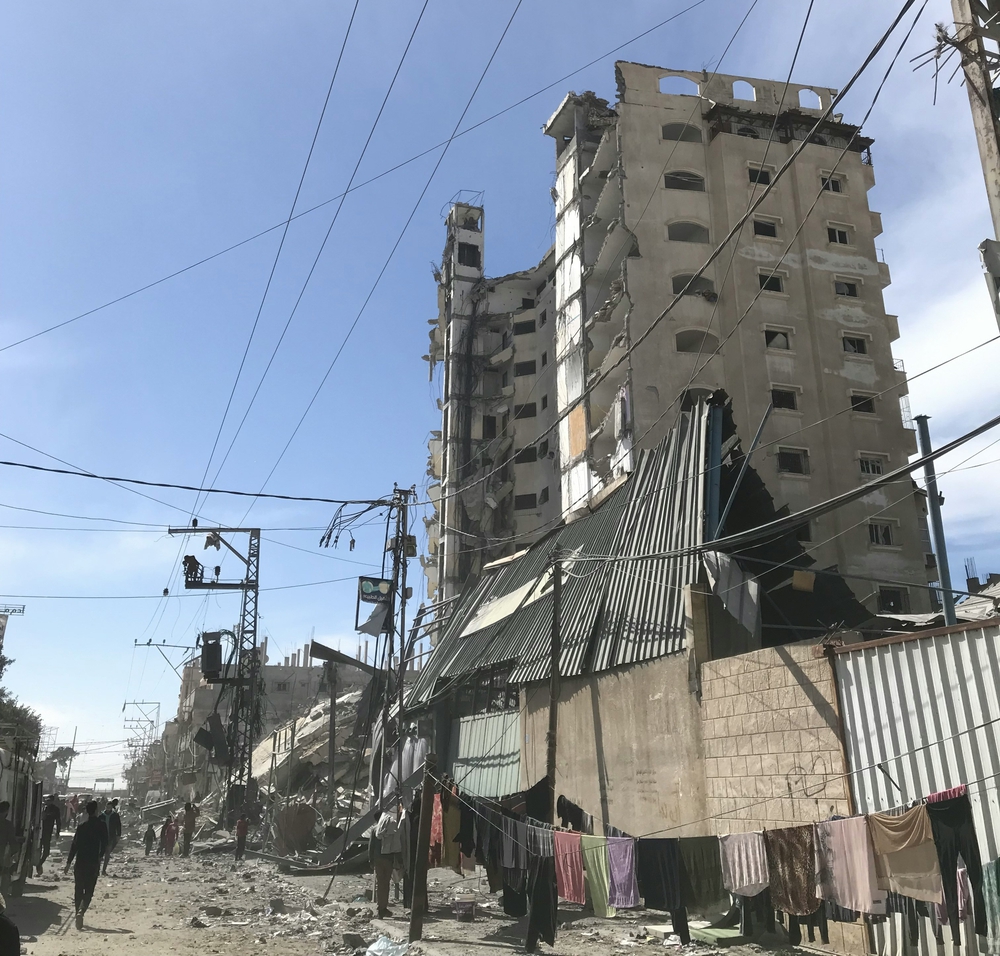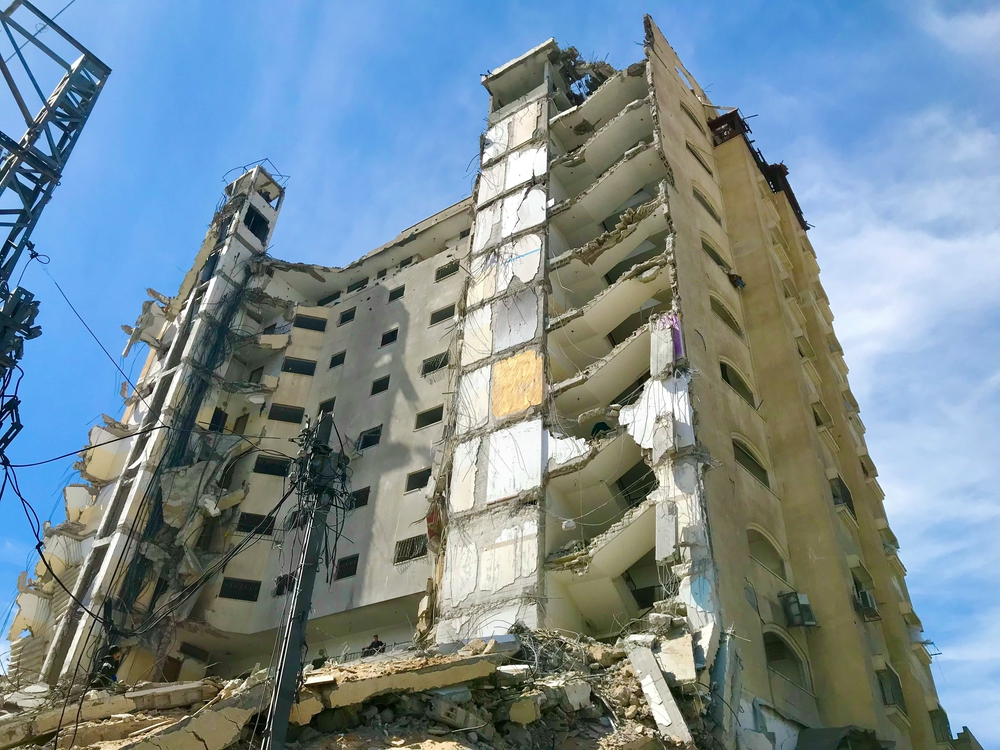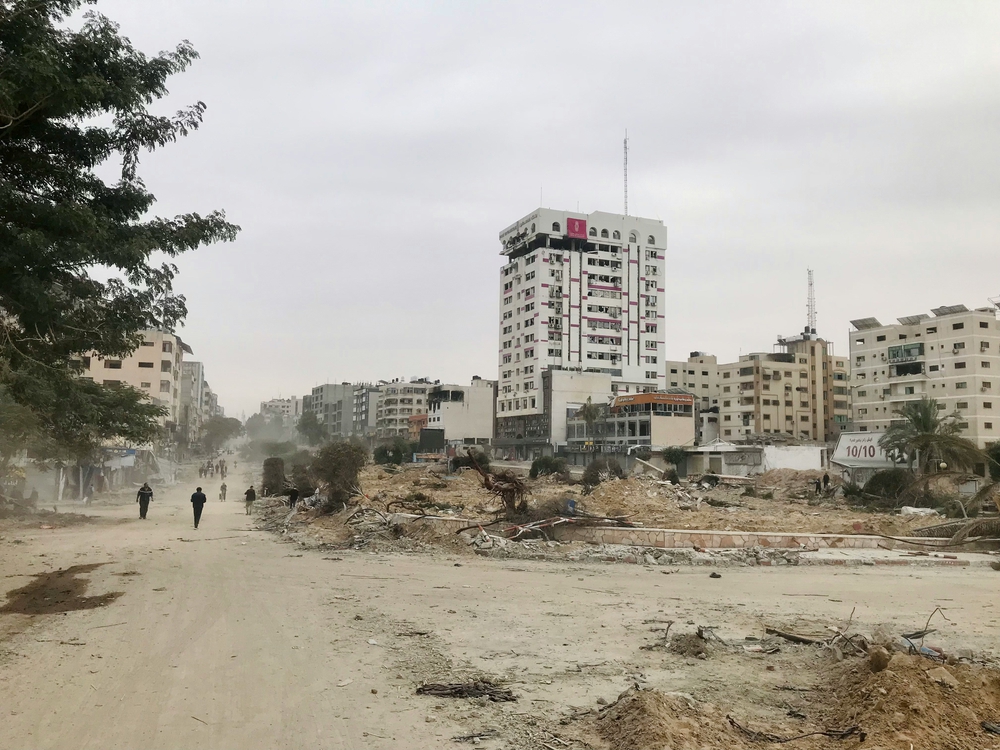An explosive ordnance disposal officer from MAG has been assisting in the safe passage of vital humanitarian convoys in Gaza.
The individual, Paul*, has supported 30 convoys of between 60 and 100 vehicles delivering essential food, medicine and fuel supplies to a range of locations in the devasted territory.
Seconded to the United Nations Mine Action Service (UNMAS), Paul was responsible for ensuring the convoys avoided potentially lethal explosive ordnance left behind in the conflict.
His four-week posting saw him travelling in a UN armoured vehicle ahead of the convoys, scouting for explosive ordnance that might impede convoy progress.
He also advised UN agencies including the World Food Programme and World Health Organisation on the risks of explosive hazards close to support centres for the hundreds of thousands of civilians affected by the conflict.
Paul, who has worked for 16 years for MAG in the Middle East, Africa and south east Asia, will complete a further four month-long postings to Gaza in the coming months.
His assignment is part of a partnership between MAG and United Nations agencies.
The convoys were delivering vaccines and other medicines to hospitals, wheat, flour and other food supplies, and fuel to help run generators to maintain essential electricity supplies for hospitals and other facilities.

Paul said: “The level of destruction we are witnessing is overwhelming and the security environment is clearly very unstable and unpredictable.
“Our job is to try to make sure the humanitarian supplies get to where they are needed so that lives can be saved. This means being very careful about the routes we take and being alert to explosive hazards, each of which has to be investigated before you can continue.
“It is a slow and tense process, with journeys that would normally take 20 minutes lasting for up to 12 hours, avoiding explosive hazards and sometimes having to take detours for safety reasons.”
MAG’s support for the civilian population caught up in the conflict comes amidst growing concerns about the levels of unexploded ordnance that might contaminate Gaza after some nine months of fighting.
Hundreds of thousands of missiles, grenades, shells, mortars and other weapons have been expended in the conflict and many of them will have failed to explode and be buried in the ground, lodged in the rubble or lying on the surface.
Clearance of ordnance, when the security situation allows, will be essential to enable the restoration of critical infrastructure, including medical, energy, water and hygiene facilities, as well as enabling humanitarian access.

In the longer term, survey and clearance of explosive remnants of the conflict, conducting in consultation with local communities and other humanitarian organisations, will be essential to any reconstruction.
The complexity of the clearance will be impacted by the immense variety of anticipated weapons deployed such as precision guided missiles, improvised rockets, air-dropped bombs and ground ordnance, including tank fire, artillery fire grenades.
Some of the air-dropped bombs could be buried as deeply as 14 metres under the surface, while other explosive items will be lodged in the tens of millions of tons of rubble. Each will require different approaches to render them safe, with some being detonated where they lie and others requiring the removal of complex and sensitive fuses by experienced explosive ordnance experts.
As of 26 April, 2024, the United Nations Palestinian relief agency UNRWA estimated that 1.7 million people had been internally displaced by the war in Gaza and were sheltering in UNRWA installations– nearly 75% of the population.
Some 500,000 of those people have no home to return to and many more will remain displaced because of the scale of the devastation caused by the conflict.
According to Oxfam, 70% of Gaza’s infrastructure has been destroyed. In total, about 70% of school buildings have been damaged and those still standing are largely being used to shelter internally displaced people.

Since October 7, MAG has been delivering emergency Digital Explosive Ordnance Risk Education messaging to get practical safety advice to those caught up in the war using social media platforms.
Our messages include guidance on how to recognise and respond to explosive threats including white phosphorous, how to prepare for and what to do during a bombardment, steps to evacuate in an emergency and how to ease children’s anxieties.
Najat al Hamri, MAG’s regional Director for the Middle East, said: “Our immediate concern is the implementation of a ceasefire so that sustained humanitarian support can be delivered to those caught up in the fighting.
“In the meantime, we are doing what we can to ensure the safety of humanitarian relief and to advise communities as best we can on how to stay safe during the conflict.
“We are engaged in positive discussions with a range of stakeholders and partners as we lay the ground work so that we are able to respond as soon as we can when there is safe access.
“With safe access, our goal would be to continue to provide support in relation to the risks of explosive ordnance so that humanitarian relief can be safely delivered and to work in partnership with local communities and other humanitarian agencies to prioritise the required survey and clearance.”
*Alias used
Image credit: Emad El Byed / Unsplash





